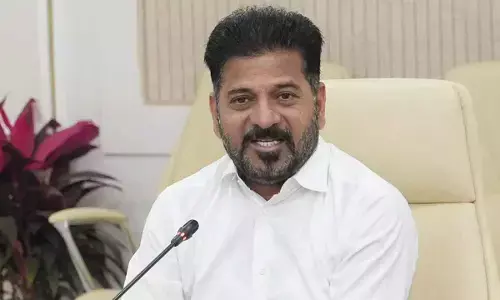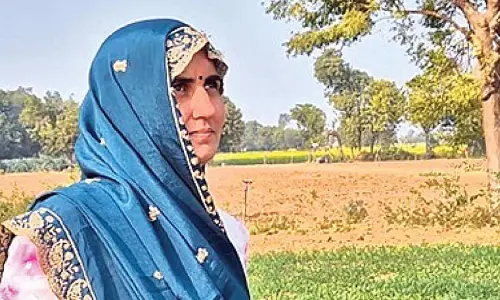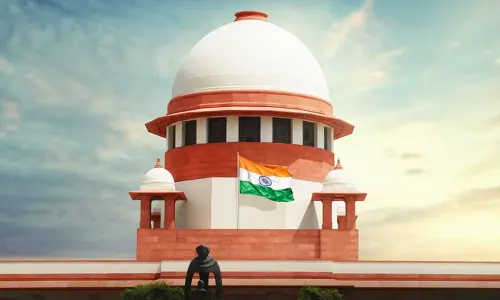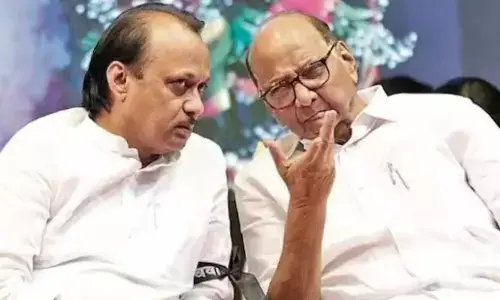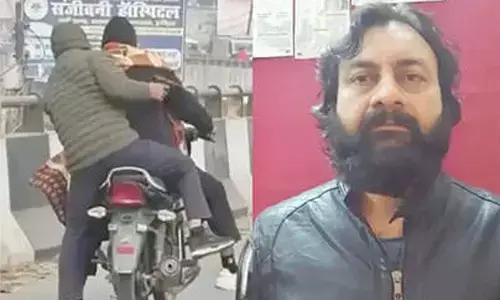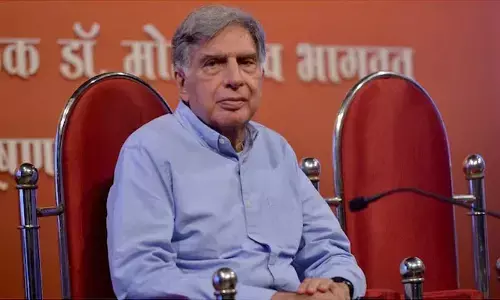Ramayana A reflection of cultural ethos
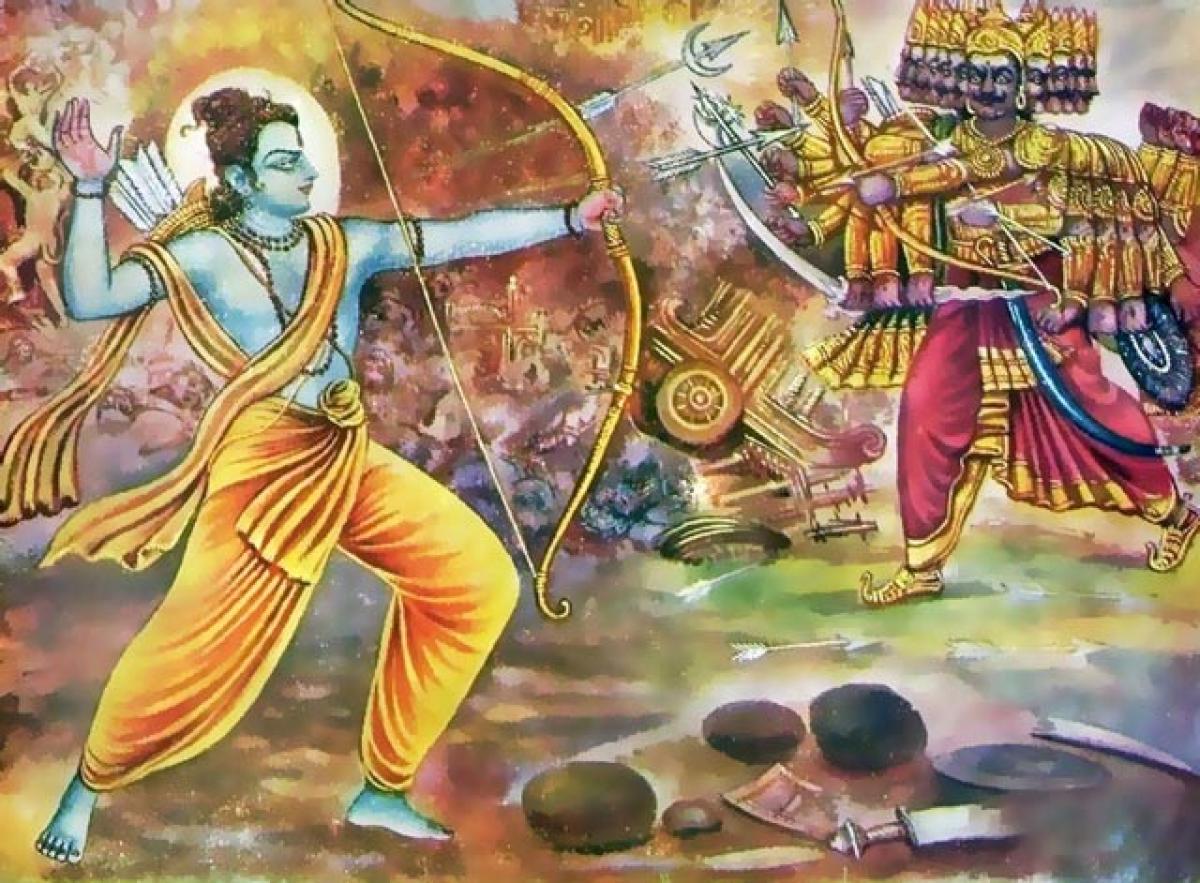
The ‘Ramayana’ is a mirror of the highest ideals of Indian culture. It forms the very warp and woof of “Sanatana Dharma”. A renowned practical Vedantist like Swamy Vivekananda hailed it as an encyclopaedia of ancient Aryan life and wisdom portraying an ideal civilisation which humanity has yet aspires after. Sri Aurobindo praised it as an agent of almost incalculable power in the moulding of the c
The ‘Ramayana’ is a mirror of the highest ideals of Indian culture. It forms the very warp and woof of “Sanatana Dharma”. A renowned practical Vedantist like Swamy Vivekananda hailed it as an encyclopaedia of ancient Aryan life and wisdom portraying an ideal civilisation which humanity has yet aspires after. Sri Aurobindo praised it as an agent of almost incalculable power in the moulding of the cultural mind of India.
Rt.Hon.VS Srinivasa Sastry exclaimed, “To me, Sri Rama is not divine. A hard-hearted man like me, I read it and strange to say, there is not a page which does not bring tears to my eyes! Any fine sentiment, any tender feeling, any affection between brother and brother, any reunion of beings that have been separated for a time, aye, any homage paid to friendship, to gratitude or to any of those eternal abiding virtues of human character brings tears to my eyes! I stop, I cannot go on.
I have to wait and wipe my eyes...Even if Rama and Sita was the hero and heroine in an alien poem I should feel probable not so very much affected but as nearly as deeply. Human nature is human nature whether nurtured here or in another land, it is just the same.”
Kulapati KM Munshi said, “Dharma, understood in terms of the twin concepts of Satya and Tyaga, so perfectly personified in one extolled as Vigrahavaan Dharma, is the one unique constituent of the pattern of life handed to us by our ancients which are valid for all times or for all people.’’ At the present day, when moral forces are making havoc of our lives, distorting our views and disrupting our foundations, we cannot do better than hearkening the voice of Sri Rama uttered through his several actions signifying the eternal ideals of our Sanatana Dharma.
Whatever it could have been the ageless India; we know and feel proud of. A king, who serves his people, has no personal life of his own. The demands of public confidence are inexorable. Even modern Britain overruled her king’s choice to marry the woman he loved and removed him from the throne when he preferred private happiness to public duty.’’ Referring to the eternal appeal of the great Indian classics Mahabharata and Ramayana, philosopher –Statesman Dr Sarvepalli Radhakrishnan stated that even the great masters like Shaw and HG Wells don’t touch the heights of genius.
They have not given us one epic which brings out the full meaning of life which leaves us throbbing with hopes and dazzled by new vistas, not a single drama of profoundly moving nature which devastates us by its grandeur, burns into us unforgettable visions of men at grips with fate, which shakes, exhausts and cleanses us. It is because they deal the tumult of the soul but not with the depth.
They are predominantly intellectual, not spiritual. To Mahatma Gandhi, the recitation of “Ramanama” is a remedy for all spiritual ailments. The last word on his lips on the ill-fated day of his assassination was ‘Rama’. According to the eminent scholar RM Challa, the real Rama is an ideal, a symbol of “Na aham arthaparah, Vidhi maam kevalam dharmam-aasthitam’’ (I am not concerned with the material prosperity. Know me the embodiment of Dharma,’’ says Sri Rama to Kaikeyi. Granted that the symbolic, idealised Rama was not a mythological but historical figure, one still has to acknowledge the vicissitudes of historical reality.’’
Eminent statesman and scholar C Rajagopalachari exhorted the young men in schools and colleges to read the Ramayana and Mahabharata as they are the records of the mind and spirit of our forefathers, who saw more of the mystery of life than we can do in our interminable pursuit for petty and illusory achievements in the material plane.’’ An erudite scholar like S Ramakrishnan hailed the Ramayana as a compendium, an almanac of dharmic conduct is the apotheosis of eternal friendship and brotherhood, maître.
Through maître alone ethnic, regional, national and international understanding and harmony could be established and maintained. Without maître striving for harmony and peace would continue to be futile.
The revered Paramacharya of Kanchi Jagadguru Sri Chandrasekharendra Saraswati sought to broadcast to the world years ago from the United Nations through the voice of the Nightingale of India –MS Subbulaksmi. Maitrim Bhajatha was the refrain of the song of the Sage of Kanchi specially composed for rendering by MS in the United Nations on October 23, 1966.
A scholar of great repute G Naganathan was of the opinion that Homer’s ‘Odyssey’, which is valued as great Grecian epic cannot be compared to the sweeping acceptance that Ramayana commands beyond the frontiers of this subcontinent. The Ramayana is a beautiful mélange of the divinely human and the humanly divine; humanity would have left him severely alone.
His attraction, the kinship we feel with him is because Sri Rama is so human. Sri Rama himself says “Atmanam manusham manye”. According to Prof. S Ramaswami “The Ramayana is the most popular theme of pravachanas in the villages and towns of India. The awe-inspiring massiveness of its impact on the minds and hearts of people has been acknowledged even by those like Nehru, who have a perverse joy in ridiculing traditions and received values of ancient Hindu India. To the pious, a reverent study of the epic is still an inescapable daily moral obligation.
In short, the Ramayana is such a sublime classic of deepest spiritual significance if one can read it between the lines. Dasaratha represents the merely physical while his three queens are personifications of the three gunas Satva, Rajas and Tamas. His four sons are the four goals of life - the Purushardhas. Lakshman is the Intellect. Sugriva is Viveka or Discrimination.
Vali is Despair, while Hanuman is the embodiment of self-effacing loyalty and devotion. The three Rakshasas Ravana, Kumbhakarna and Vibhishana are personifications of Rajasic, Tamasic and Satwic qualities. Sita is the Brahmajnana while Sri Rama is the very embodiment of Dharma of all the codes of morality that hold mankind together in love and unity.
By SM Kompella









